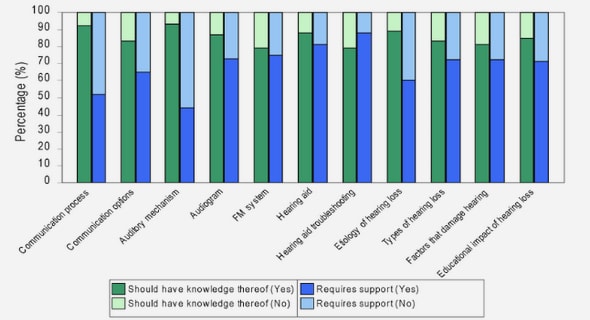(Downloads - 0)
For more info about our services contact : help@bestpfe.com
Table of contents
1 Introduction
Highlights of the Chapter 1
1.1 Uncertainty resources in well-logging
1.2 The thesis questions and objectives
1.2.1 Question I: vertical resolution of well-logs
1.2.2 Question II: possibilistic uncertainty range of petrophysical parameters
1.3 The importance of the thesis
1.3.1 Fundamental and scientific importance
1.3.2 Application importance
1.3.3 Economic and management importance
1.4 Literature review
1.4.1 Uncertainty in sciences
1.4.2 Uncertainty in geosciences and petroleum exploration
1.5 Introducing datasets
1.5.1 Basic definitions
1.5.2 Synthetic data
1.5.3 Real data
2 Theories
Highlights of Chapter 2
2.1 Dempster-Shafer Theory of evidences
2.1.1 Body Of Evidences
2.1.2 Belief and plausibility functions
2.1.3 Consistency of uncertainty assessment theories
2.2 Fuzzy arithmetic
2.2.1 Fuzzy number
2.2.2 Arithmetic operations on intervals
2.2.3 Arithmetic operations on fuzzy numbers
2.3 Cluster analysis
2.3.1 k-means and fuzzy c-means algorithms
2.3.2 Gustafson-Kessel clustering technique
2.3.3 Gath-Geva clustering technique
2.4 Empirical relations in petrophysics
2.4.1 Porosity study by well-logs
2.4.2 Irreducible water saturation
2.4.3 Wylie-Rose permeability relation
3 Modelling vertical resolution
Highlights of Chapter 3
3.1 Volumetric nature of well-log recordings
3.1.1 Different types of resolution
3.1.2 VRmf > spacing > sampling rate
3.2 Modelling logging mechanism by fuzzy memberships
3.2.1 Recording configuration and well-log
3.2.2 Approximating VRmf
3.2.3 Passive log of GR
3.2.4 Active logs of RHOB and NPHI
3.2.5 Complex membership function of compensated sonic log
3.3 Volumetric Nyquist frequency
3.4 Conclusions of Chapter 3
4 Thin-bed characterization, geometric method
Highlights of Chapter 4
4.1 Review of thin-bed studies
4.1.1 VLSA Method
4.2 Theory of geometric thin-bed simulator
4.3 Sensitivity analysis of well-logs to a 30 cm thin-bed
4.4 Deconvolution relations for thin-bed characterization
4.5 Thin-bed characterization, the Sarvak Formation case-study
4.5.1 Multi-well-log thin-bed characterization
4.6 Conclusions of Chapter 4
5 Enhancing vertical resolution of well-logs
Highlights of Chapter 5
5.1 Combining adjacent well-log records by Bayesian Theorem
5.1.1 The importance of volumetric Nyquist frequency in up-scaling
5.2 Body Of Evidences (BOE) for well-logs
5.2.1 Focal elements of well-logs
5.2.2 Mass function of focal element of recording
5.3 Belief and plausibility functions for focal element of target
5.3.1 Theoretical functions of belief and plausibility
5.3.2 Geological constraints as an axiomatic structure
5.3.3 Practical functions of belief and plausibility
5.3.4 Compensating shoulder-bed effect by epsilon
5.4 Log simulators
5.4.1 Random simulator
5.4.2 Random-optimization simulator
5.4.3 Recursive simulator
5.4.4 Recursive-optimization simulator
5.4.5 Validation criteria
5.5 The algorithm
5.6 Application check on synthetic cases
5.7 Discussion on results of synthetic cases
5.7.1 Validating constraint-based error by synthetic cases
5.8 Application to real data
5.8.1 Simulator selection
5.8.2 Optimizing factor of shoulder-bed effect
5.8.3 Results of resolution improvement of real well-logs
5.9 Discussions
5.9.1 Comparing DST and geometry-based results in thin-bed characterization
5.9.2 Advantages of DST-based algorithm
5.9.3 Uncertainty conversion using DST
5.10 Conclusions of Chapter 5
6 Uncertainty projection on reservoir parameters
Highlights of Chapter 6
6.1 Importance of cluster analysis in well-log interpretation
6.2 Porosity analysis by cluster-based method
6.2.1 Methodology of cluster-based porosity analysis
6.2.2 Results of cluster-based porosity analysis
6.2.3 Discussion of cluster-based porosity analysis
6.3 Permeability analysis by fuzzy arithmetic
6.3.1 Methodology of permeability analysis by fuzzy arithmetic
6.3.2 Validation with core data
6.3.3 Results and discussions of analysis by fuzzy arithmetic
6.4 Conclusions of Chapter 6
7 Ending
7.1 Pathway of the thesis
7.1.1 Outlined achievements of the thesis
7.2 Recommendations
7.2.1 Recommendations for industrial applications
7.2.2 Recommendations for further researches (perspectives)



